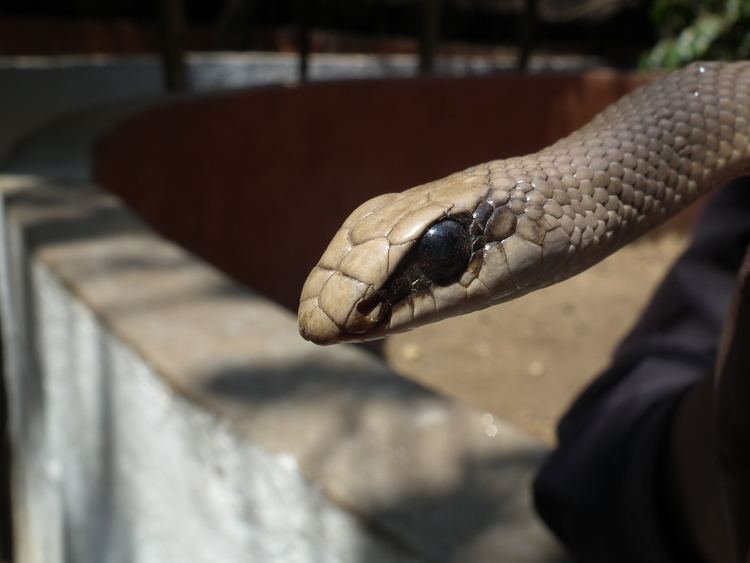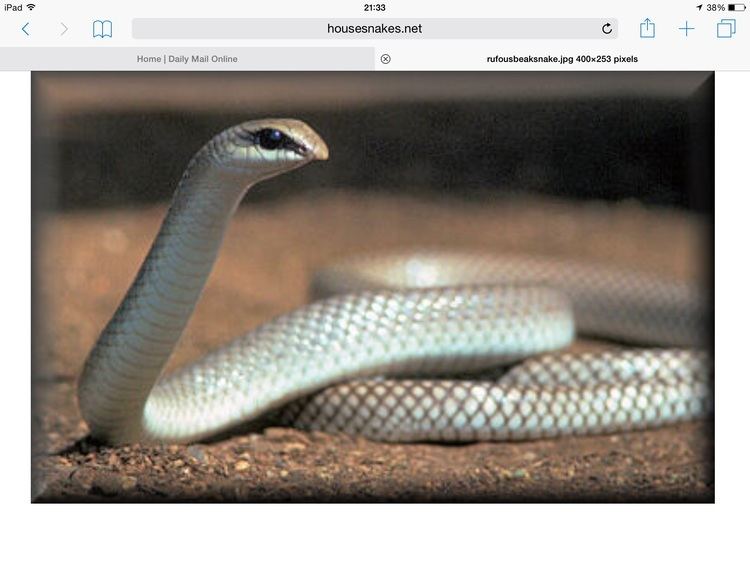Suborder Serpentes Genus Rhamphiophis Phylum Chordata Rank Species | Subphylum Vertebrata Family Colubridae Scientific name Rhamphiophis oxyrhynchus Higher classification Rhamphiophis Order Scaled reptiles | |
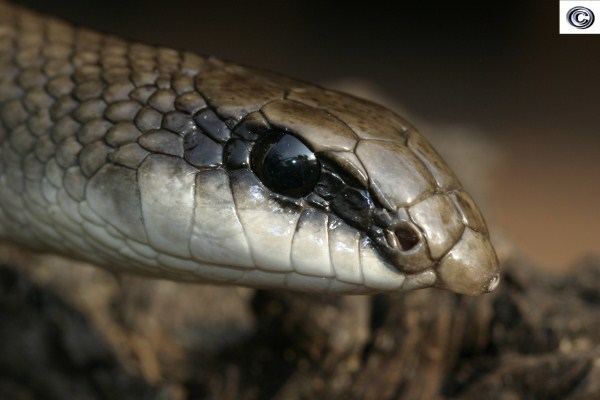 | ||
Similar Rhamphiophis, Snake, Reptile, Rhamphiophis rubropunctatus, Colubridae | ||
Rufous beaked snakes
The rufous beaked snake (Rhamphiophis oxyrhynchus) is a species of mildly venomous colubrid endemic to East Africa. It is named for its hooked snout, which it uses to dig burrows, and for its reddish-brown back scales. It hunts small animals during the day with the help of its venomous bite.
Contents
- Rufous beaked snakes
- Rufous beaked snakes feeding
- Taxonomy
- Description
- Geographic range
- Habitat
- Biology
- References
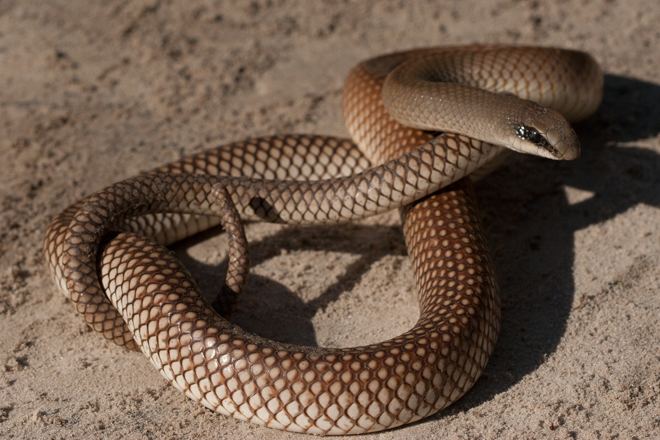
Rufous beaked snakes feeding
Taxonomy
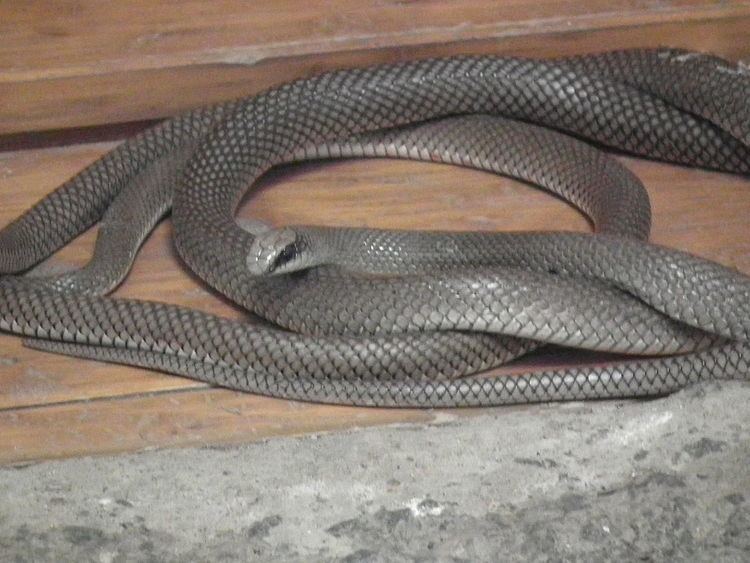
The two subspecies are R.o. oxyrhynchus (J.T. Reinhardt, 1843) and R.o. rostratus W. Peters, 1854. Some authorities consider the latter to be a species, R. rostratus W. Peters, 1854.
Description
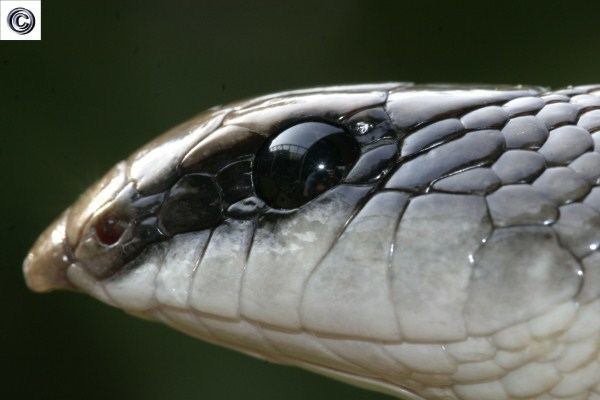
The rufous beaked snake is large and stout, with males reaching a maximum length of 1.1 m (3.6 ft) and females reaching 1.07 m (3.5 ft). It has a shortened skull, as with all beaked snakes, giving it a clear distinction between its head and body, as well as a dark brown eye stripe running down the side of its head. Its eyes are large with round pupils. While its back tends to be yellowish-brown to reddish-brown, its belly is cream or yellowish-white.
Geographic range
The rufous beaked snake's range includes north Botswana, north Zimbabwe, Mozambique, Tanzania, and Sudan.
Habitat
It primarily inhabits bushveld and thornveld habitats.
Biology
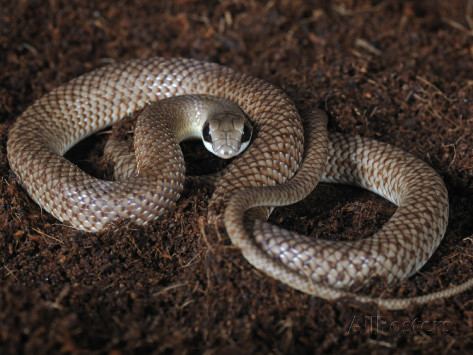
Diurnal animals, rufous beaked snakes hunt small animals, including other snakes, but stay in burrows during the hottest part of the day. In the summer, females lay eight to 17 cylindrical eggs with dimensions of about 36 mm × 21 mm (1.42 in × 0.83 in) over the span of several days. The snake's venom, one of its components of which is a neurotoxin called rufoxin, causes hypotension and circulatory shock in small mammals, but is not dangerous to humans.
